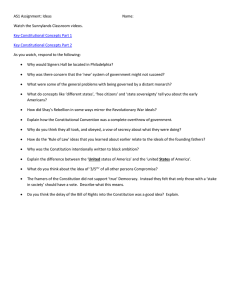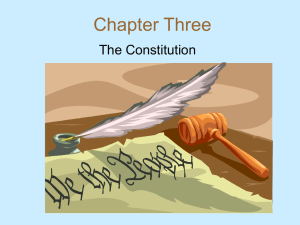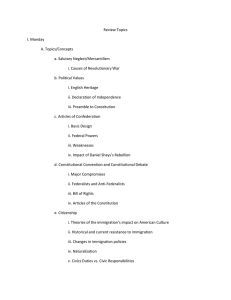Our Constitutional Framework
advertisement
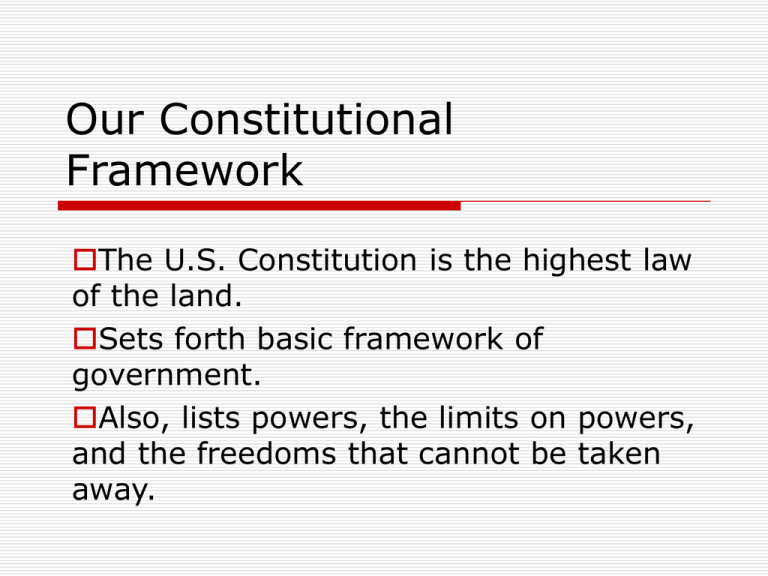
Our Constitutional Framework The U.S. Constitution is the highest law of the land. Sets forth basic framework of government. Also, lists powers, the limits on powers, and the freedoms that cannot be taken away. Our Constitutional Framework Limited Government: Fundamental notion of Constitution. National government has limited power with regulation over only those rules in Article I of the Constitution. Separation of Powers: Three branches of government. Meant to keep one branch from becoming too powerful. Our Constitutional Framework Statutes: These are laws. Passed only by the Legislative branch, or Congress. Checks and Balances: The branches of government are independent, but have the ability to “check” or “balance” one another. In other words, keep them in their place. Our Constitutional Framework Veto: Presidential power aimed at “checking” the Legislature. A refusal to approve a law. Judicial review: The Courts are allowed to determine the Constitutionality of a law. Another “check”. Unconstitutional: A law the Courts have found to be against the Constitution. Our Constitutional Framework Federalism: The division of power between the Federal and State government. Bill of Rights: The first 10 amendments to the Constitution. Guarantees fundamental rights of people. Religion, speech, press, bear arms… The Bill of Rights http://billofrightsinstitute.org/foundin g-documents/bill-of-rights/ What principle? Separation of Powers, Checks and Balances, Judicial review, federalism, combination? A state law requires that a prayer be said each day in a public school. The courts rule that the law violates the First Amendment. Does it? Congress passes a law requiring that Supreme Court sessions be televised. Because a prison is very old and overcrowded, a state court orders the state legislature to spend $100 million on a new prison.

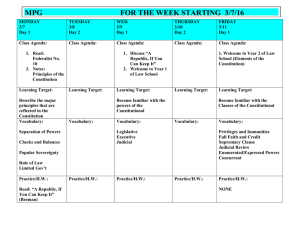


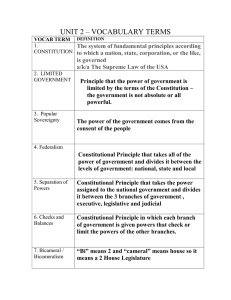
![Study Guide 2, 4, 5 [9/10/2014]](http://s2.studylib.net/store/data/010183749_1-86b83281da8ae91769d306fb127249cb-300x300.png)
